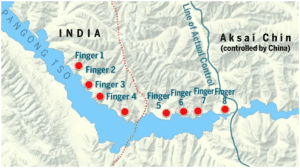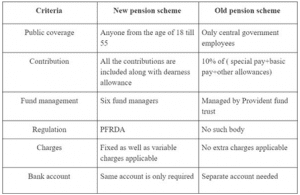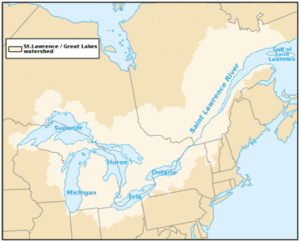INTERNATIONAL RELATIONS
1. WHAT ARE VOSTRO ACCOUNTS AND NOSTRO ACCOUNT?
THE CONTEXT: The government announced that nine special Vostro accounts have been opened with two Indian banks after permission from the RBI to facilitate trade in rupee in the wake of sanctions on Russia by the US and European countries.
THE EXPLANATION:
What is a Vostro account?
- A Vostro account is an account that a domestic bank holds for a foreign bank in the domestic bank’s currency — which, in the case of India, is the rupee. The RBI allowed nine such accounts, including IndusInd Bank and Uco Bank.
- In the case of trade with Russia, payments in rupee for the export and import of goods will go to these Vostro accounts. The owners and beneficiaries of this money will be the exporters and importers in both the countries. The banks will keep the record of money transferred.
And what is a Nostro account?
- Two kinds of accounts, Vostro and Nostro, are often mentioned together. Both Vostro and Nostro are technically the same type of account, with the difference being who opens the account and where.
- So, if an Indian bank like the SBI wants to open an account in the United States, it will get in touch with a bank in the US, which will open a Nostro account and accept payments for SBI in dollars.
- The account opened by the Indian bank in the US will be a Nostro account for the Indian bank, while for the US bank, the account will be considered a Vostro account.
- Literally, Nostro means ‘ours’ and Vostro means ‘yours’ in Latin. Therefore, the accounts opened by IndusInd and UCO are Vostro, and the ones opened by Russia’s Sberbank and VTB Bank are Nostro accounts.
What led to creation of the Vostro accounts?
- Recently,, the RBI put in place a mechanism to settle international trade in rupees “in order to promote growth of global trade with emphasis on exports from India and to support the increasing interest of the global trading community in the rupee”.
- The central bank’s move has come in the wake of increasing pressure on the Indian currency in the wake of Russia’s invasion of Ukraine and sanctions by the US and the EU.
- According to the central bank, AD (authorised dealer) banks in India have been permitted to open rupee Vostro accounts. Accordingly, for settlement of trade transactions with any country, an AD bank in India may open special rupee Vostro accounts of correspondent banks of the partner trading country.
ENVIRONMENT, ECOLOGY AND CLIMATE CHANGE
2. INDIA OPPOSES ‘CARBON BORDER TAX’ AT COP-27
THE CONTEXT: With the 27th edition of the Conference of Parties (COP) in Sharm El Sheikh nearing its final stages and efforts being ramped up to arrive at a conclusive agreement, a consortium of countries that includes India has jointly stated that carbon border taxes, that could result in market distortion and aggravate the trust deficit amongst parties, must be avoided.
THE EXPLANATION:
- The European Union has proposed a policy — called the Carbon Border Adjustment Mechanism — to tax products such as cement and steel, that are extremely carbon intensive, with effect from 2026.
- BASIC, a group constituting Brazil, India, South Africa and China, and therefore large economies that are significantly dependent on coal, has for several years voiced common concerns and reiterated their right to use fossil fuel in the interim during their countries’ eventual transformation to clean energy sources.
- “Unilateral measures and discriminatory practices, such as carbon border taxes, that could result in market distortion and aggravate the trust deficit amongst Parties [signatory countries to the United Nations climate agreements], must be avoided. BASIC countries call for a united solidarity response by developing countries to any unfair shifting of responsibilities from developed to developing countries.”
- Their joint statement expressed “grave concern” that developed countries were still not showing leadership or responding with a matching progression of effort. Developed countries had “backtracked on finance and mitigation commitments and pledges” and there was a “significant increase” in the consumption and production of fossil fuels in the past year by developed countries, their statement underlined, even as they continue to press developing countries to move away from the same resources. “Such double standards are incompatible with climate equity and justice.”
About Carbon Border Adjustment Mechanism:
- Carbon border adjustments, also referred to as “carbon border adjustment mechanisms” (CBAM), are an emerging set of trade policy tools that aim to prevent carbon-intensive economic activity from moving out of jurisdictions with relatively stringent climate policies and into those with relatively less stringent policies.
- Border adjustments have the potential to increase the environmental effectiveness of climate policies, by averting shifts in economic activity that could lead to higher total greenhouse emissions — a phenomenon known as “carbon leakage.” They are also seen as a way of protecting industrial competitiveness by reducing the incentive for businesses to move production abroad.
SCIENCE AND TECHNOLOGY
3. ARTEMIS MISSION
THE CONTEXT: NASA’s giant Moon rocket lifted off on its debut flight at 1.47 am EST (12.17 pm IST) on November 16, 2022 heralding an exciting new phase of deep space exploration a half century after the six Apollo human Moon landings between 1969 and 1972.
THE EXPLANATION:
The mission, known as Artemis 1, is unmanned, but headed to the Moon on board Orion are three dummies that mimic astronauts — with the intention of carrying out tests ahead of future manned missions to the Moon and beyond.
What is the Artemis mission?
- NASA’s Artemis mission is touted as the next generation of lunar exploration and is named after the twin sister of Apollo from Greek mythology. Artemis is also the goddess of the moon.
- Artemis I is the first of NASA’s deep space exploration systems. It is an uncrewed space mission where the spacecraft will launch on SLS — the most powerful rocket in the world — and travel 2,80,000 miles from the earth for over four to six weeks during the course of the mission. The Orion spacecraft is going to remain in space without docking to a space station, longer than any ship for astronauts has ever done before.
- The SLS rocket has been designed for space missions beyond the low-earth orbit and can carry crew or cargo to the moon and beyond. With the Artemis programme, NASA aims to land humans on the moon by 2024, and it also plans to land the first woman and first person of colour on the moon.
- With this mission, NASA aims to contribute to scientific discovery and economic benefits and inspire a new generation of explorers.
- NASA will establish an Artemis Base Camp on the surface and a gateway in the lunar orbit to aid exploration by robots and astronauts. The gateway is a critical component of NASA’s sustainable lunar operations and will serve as a multi-purpose outpost orbiting the moon.
- The Canadian Space Agency has committed to providing advanced robotics for the gateway, and the European Space Agency will provide the International Habitat and the ESPRIT module, which will deliver additional communications capabilities among other things. The Japan Aerospace Exploration Agency plans to contribute habitation components and logistics resupply.
What is the mission trajectory?
QUICK FACTS:
The Deep Space Network – – is NASA’s international array of giant radio antennas that supports interplanetary spacecraft missions, plus a few that orbit Earth. The DSN also provides radar and radio astronomy observations that improve the understanding of the solar system and the larger universe.
- SLS and Orion under Artemis I will be launched from the Kennedy Space Centre in Florida, the U.S. in the summer of 2022. The spacecraft will deploy the interim cryogenic propulsion stage (ICPS), a liquid oxygen/liquid hydrogen-based propulsion system that will give Orion the thrust needed to leave the earth’s orbit and travel toward the moon.
- The spacecraft will communicate with the control centre back on Earth through the deep-space network. The aim of the exercise is to collect data and to allow mission controllers to assess the performance of the spacecraft.
- To re-enter the earth’s atmosphere, Orion will do a close flyby within less than 100 km of the moon’s surface and use both the service module and the moon’s gravity to accelerate back towards the earth. The mission will end with the spacecraft’s ability to return safely to the earth.
SECURITY AFFAIRS
4. INDIA DEPLOYS NEW DOCKS, UPGRADES SPEEDBOATS FOR PANGONG TSO PATROL
THE CONTEXT: The Army has deployed new landing docks and speedboats for patrolling on the Pangong Tso in eastern Ladakh, matching the Chinese deployments on the lake.
THE EXPLANATION:
- According to Indian Army, this is a part of an overall capability enhancement and infrastructure development taken up by India since the 2020 stand-off to plug deficiencies and catch up with the Chinese build-up along the Line of Actual Control (LAC).
- “The induction has given huge impetus to our patrolling capability and we now have boats which match the adversary”. The landing crafts are capable of carrying 35 troops or one jeep and 12 personnel, while the speedboats can reach speeds of 35 knots.
- Also, the new landing crafts have also been deployed at Sir Creek in Gujarat facing Pakistan.
- Pangong Tso has been an area of constant friction between India and China for a long time. India holds one-third of the 135-km-long boomerang shaped lake.
- The lake, a glacial melt, has mountain spurs of the Chang Chenmo range jutting down referred to as ‘fingers’ and the brackish water lake freezes in winter.
- India has always held until Finger 4 while it claims till Finger 8, which is where the Indian perception of the LAC lies.
- The north bank of the lake, which has a much more higher difference in perception of the LAC than the south bank, was the initial site of the clash in May 2020, the beginning of the stand-off. The Indian Army has a permanent position near Finger 3.

GOVERNMENT SCHEMES IN NEWS
5. WHY THE OLD PENSION SCHEME IS BOTH BAD ECONOMICS AND BAD POLITICS
THE CONTEXT: Amid elections in Gujarat and Himachal, the political parties are promising to switch to the Old Pension Scheme. UPA has already reverted to the Old Pension Scheme in Rajasthan and Chhattisgarh, and AAP has said it would do the same in Punjab.
THE EXPLANATION:
OPS vs NPS: Difference
- National Pension Scheme replaced the OPS with effect from April 1, 2004. Under the old pension scheme, retired employees received 50% of their last salary as monthly pensions. In contrast, NPS is a contributory pension scheme under which employees contribute 10% of their salary (Basic + Dearness Allowance), and the Government contributes 14% towards the employees’ NPS accounts.
- PFRDA-approved pension fund managers manage the funds under NPS. The onus of purchasing the annuity plan from approved pension providers is on the employee under NPS. At the time of retirement, employees must purchase an annuity plan for a monthly pension with a minimum of 40% of the accumulated corpus. The employee can withdraw the remaining amount as a lump sum.

What was the origin of the New Pension Scheme?
- The New Pension System proposed by the Project OASIS report became the basis for pension reforms — and what was originally conceived for unorganised sector workers, was adopted by the government for its own employees.
- The New Pension Scheme (NPS) for Central government employees was notified on December 22, 2003. Unlike some other countries, the NPS was for prospective employees — it was made mandatory for all new recruits joining government service from January 1, 2004.
- The defined contribution comprised 10 per cent of the basic salary and dearness allowance by the employee and a matching contribution by the government — this was Tier 1, with contributions being mandatory. In January 2019, the government increased its contribution to 14 per cent of the basic salary and dearness allowance.
- Individuals can choose from a range of schemes from low risk to high risk, and pension fund managers promoted by public sector banks and financial institutions, as well as private companies.
THE PRELIMS PRACTICE QUESTION
QUESTION OF THE DAY
Q1. Which of the following seaway between Canada and the U.S. that permits oceangoing vessels to travel from the Atlantic Ocean to the Great Lakes of North America?
a) Labrador Sea
b) Hudson Bay
c) St. Lawrence Seaway
d) Baffin Bay
Answer: C
Explanation:


